The open sandy beach is one of the hardest habitats to live in on a barrier island. There is no where to hide and almost nothing to eat. Add to this the direct wind and waves from the Gulf of Mexico and you have a barren landscape with continuous climate and ocean energy. But creatures do live here.
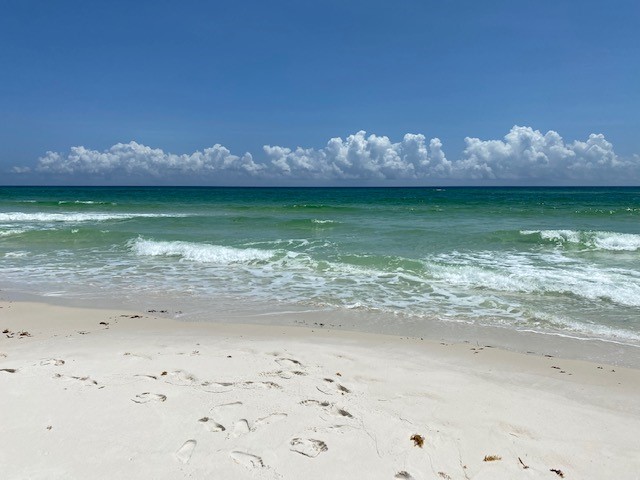
Before we go further let’s define a few terms. The beach is actually the dry sandy portion of this environment. The area where the sand squeaks as you walk through it, the place where you set your chairs, umbrellas, and lunch for your day at the beach. The berm is the harder packed sand near the waters edge. The place where you like walk when you walk the beach (it’s easier) and the waves wash over every few seconds. Living in these two would be very different. Second, we will define resident and transient. A resident is a creature who actually resides there. A transient is just passing through but lives somewhere else.
As you look across the beach you will notice there is NO WHERE to hide from the elements… except beneath the sand. One of the more common creatures who lives beneath the is the ghost crab (Ocypode quadrata). This crustacean digs burrows down to the water table where they can keep their gills wet and this can be as deep as four feet. On these flat beaches they are easy target for predators. They have several ways to deal with the problem. (1) Their compound eyes are on stalks above their head to give them a wider, and longer, range of view. (2) They are white in color and blend in with the quartz sand well. (3) They are more active at night, nocturnal. (4) They are very fast.
The trick to speed is to break contact with the ground. If you were to ask someone “what is the fastest way to get to Los Angeles?” They would answer “flying”, and this would be correct. Birds are some of the fastest creatures around. They fly. They lift off the ground and do not touch again until they reach their destination. It does not get any better than that. Cheetahs are very fast as well. But if you watch them in slow motion, you will see they are basically leaping from one point to the next. They touch the ground very few times over a certain distance. They are trying to fly but cannot. If look at video of a human, or centipede, or slug. Not sot good. Crabs are crustaceans and by definition they have 10 legs. When they move across the surface, they usually use eight of those (two being their claws). The same is true for the ghost crabs. But when they decide to run, they only run on three of them. They raise the other five above their heads. This means fewer legs touching the sand which means they are faster.
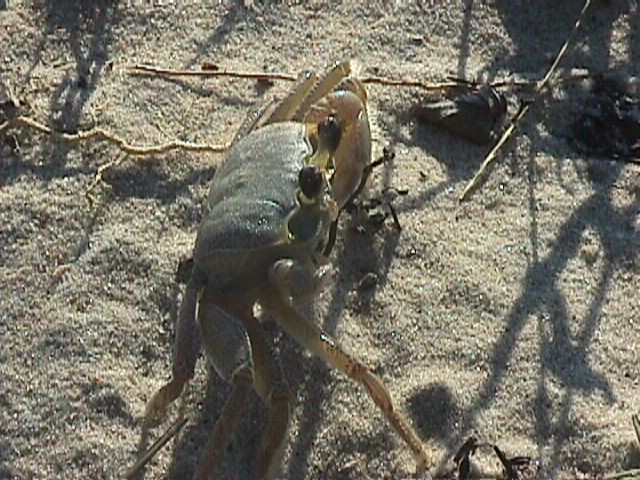
Food is another issue. Due to direct high wind (filled with salt), plants do not grow on the beach. Hence the classic food chain (plant – herbivore – carnivore) cannot exist. So, what do ghost crabs eat? They are scavengers. They emerge from their burrows, usually at night, to seek what dead creatures the tide may have washed in. Post storms are particularly good feeding times. Surf fishermen along the Gulf beach often catch hardhead catfish and, not liking them, often toss them on the beach to die. In the evening the ghost crabs will drag these to the entrance of their burrows where they feast for quite a while. They eventually clean to fish to the bone leaving their “hard head” (the skull). When you look at the skull from underneath it appears to be Jesus on the crucifix. These skulls are often collected and sold in novelty stores as “crucifix fish”.
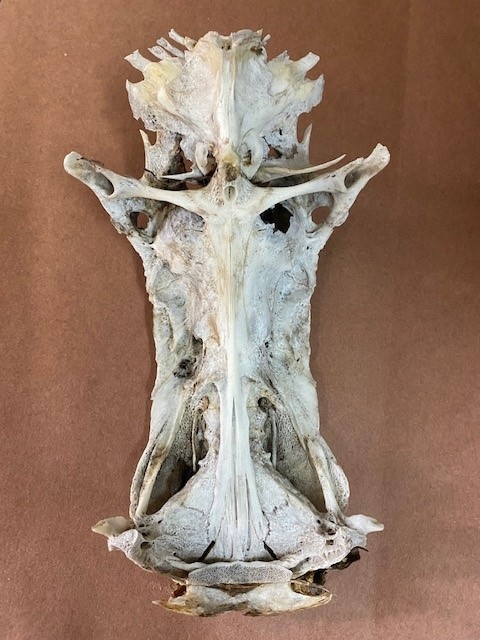
Another prize for ghost crabs are sea turtle eggs. Sea turtles are obvious transients to the beach environment, coming here only during nesting season. The females usually approach the beach close to where they were born at night. She will labor her way across the beach to the first dune line, though some will lay theirs in the open beach area. She could spend several hours digging a hole three to five feet deep. Loggerhead Sea Turtles (the most common on our beaches) simply dig a hole. The Green Sea Turtle will use her flippers to dig a form for her body before digging the nest. She will deposit about 100 eggs before burying them and returning to the Gulf. Ghost crabs, and other beach transients like coyotes, fox, and raccoons, will find and raid these nests.
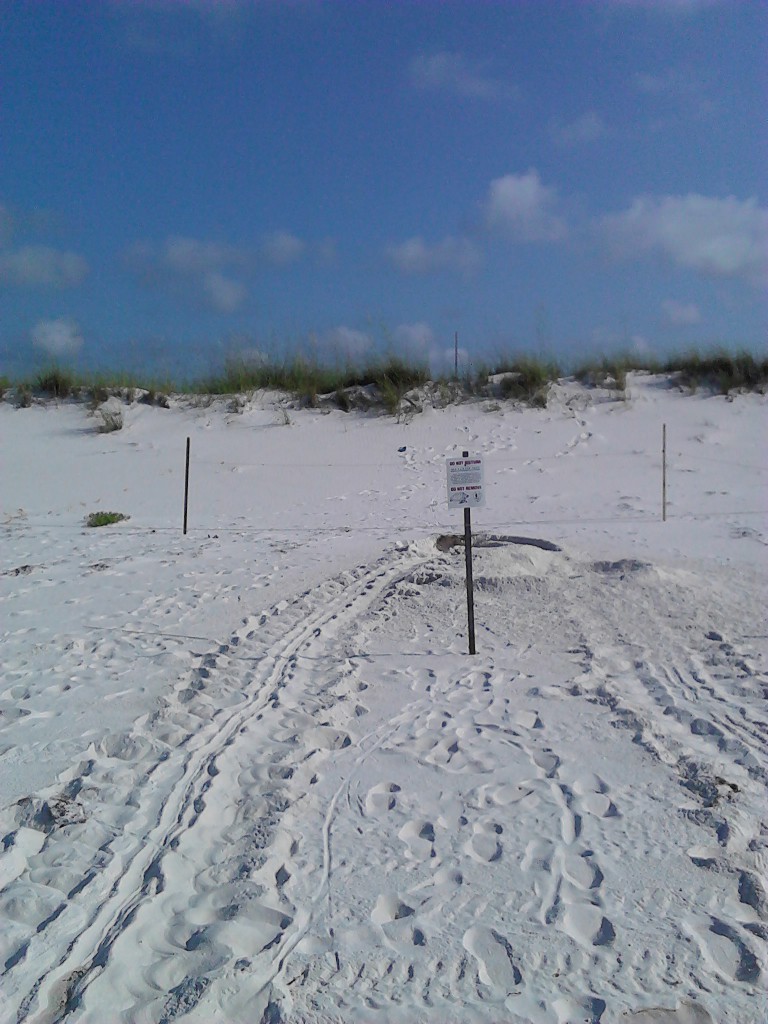
The wrack (a line of debris that includes seaweed, shells, and other flotsam from the Gulf) offers a variety of food for ghost crabs. Another who is often found scavenging the wrack are shore birds. There are numerous species of terns, gulls, pipers, and plovers that will pick through the wrack for food.
The berm is a tougher place to make home. You are in the surf zone and must deal with breaking waves every few seconds. As you might expect, there are no plants here, and very few animals. Those that do reside here bury in the sand knowing that the surf will most likely expose them and could carry them to another location. The two most common animals in this zone are the mole crab and the coquina.
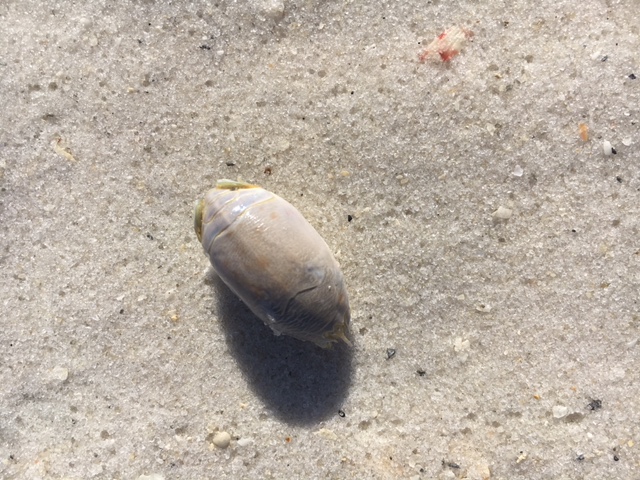
The mole crab (Emerita talpoida) is also known by surf fishermen as the “sand flea”. It is a small oval shaped crab that has a hard paddle like telson to dig into the wet sand tail first. With its head exposed it will extend antenna that are covered with small hair-like structures designed to collect plankton from the water that covers it when the waves come in. The surf often exposes them, but they flip over and dig back in very quickly.
The coquina (Donax variabilis) is a small clam that comes in a variety of colors (hence it’s species name). Like all clams, it has a fleshy foot which it uses to quickly dig into the wet sand covering most of its body. Like the mole crab, it exposes its head into the surf extending two fleshy tubes called siphons that draw water into the clam where it can collect planktonic food.
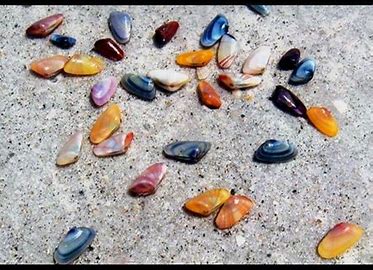
Predators do exist here, but they are not residents. They would include transient fish that come close to shore waiting for the surf to wash these small animals into the Gulf. One of the more common is the Florida Pompano. Surf fishermen like to use “sand flea” baskets, dragging them through the sand near the waters edge to capture the mole crabs for bait seeking these tasty fish. Others would include an assortment of shorebirds like sand pipers and plovers who run to the wet sand when the surf recedes back into the Gulf probing for the mole crabs and coquina, then quickly running back towards the beach when the surf returns.
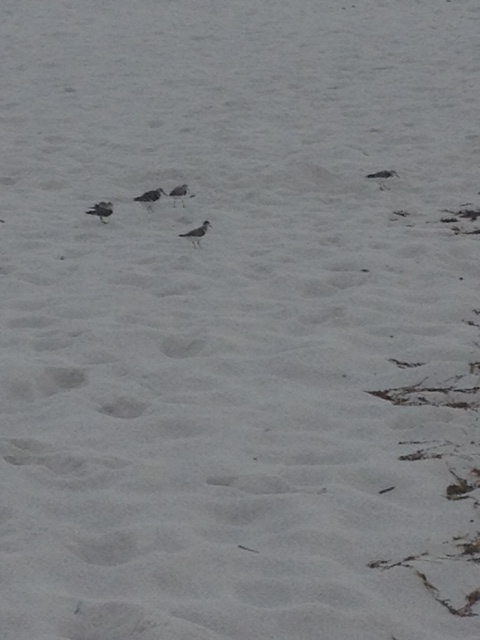
The diversity of life in the beach-berm zone is not high, but this is a tough place to make a living. Ghost crabs, mole crabs, and coquina clams have all adapted to living here and have done quite well. But more wildlife prefers the dunes. It is a little easier there and the next stop in Part 5 of this series.
- St. Joe Red Tide Claiming Terrapins - December 15, 2025
- The 2025 Snake Watch Report for the Pensacola Bay Area - December 15, 2025
- Rattlesnakes on Our Barrier Islands; Part 2 – Prey Selection - December 15, 2025
